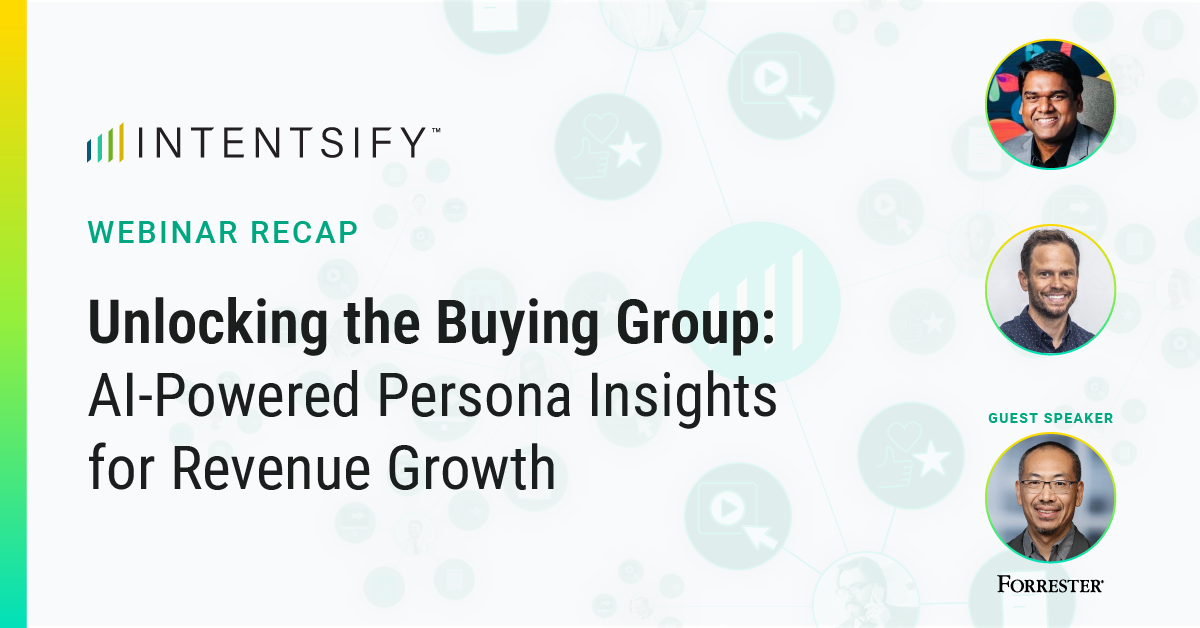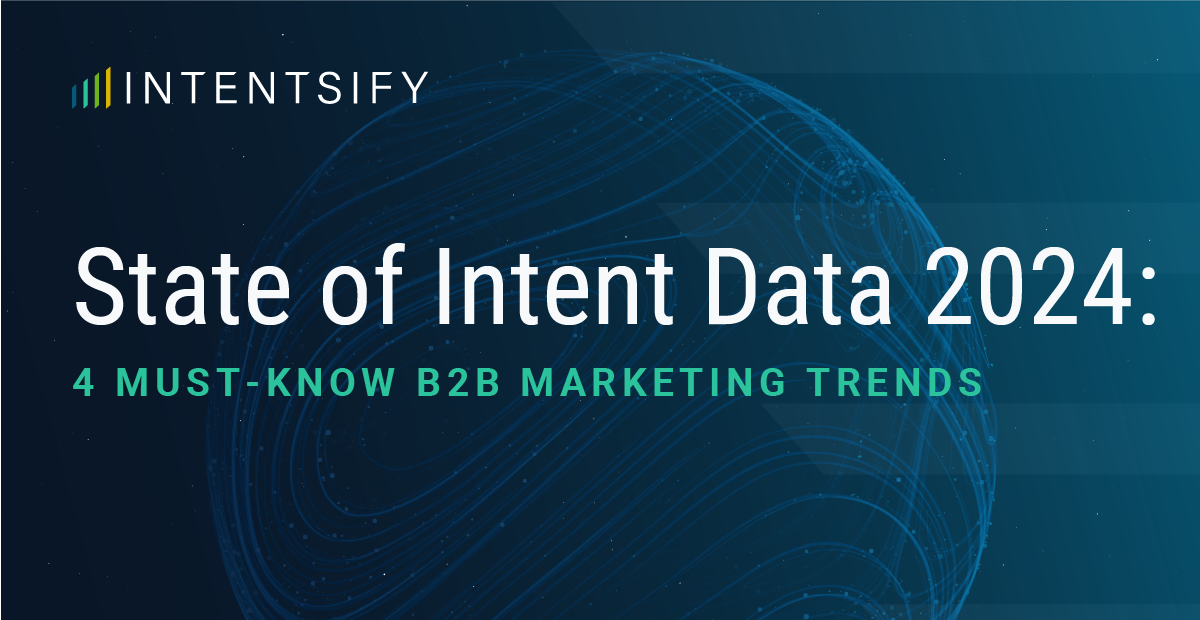Buying groups, not individuals, make B2B purchasing decisions. As decision-making processes become more complex, sales and marketing professionals must target buying group members with precision to accelerate the path to revenue.
In a recent webinar, Intentsify and Forrester dove into how frontline marketers use revenue marketing platforms to identify, engage, and influence decision-makers at the persona and buying group member level and reach the right people at the right time with marketing programs that resonate.
Here’s a recap of why traditional lead- and account-based approaches fall short, what a B2B buying group looks like, and how to successfully approach buying groups with the right technical capabilities.
What’s Wrong with Traditional Lead-Based and Account-Based Approach?
The traditional lead-based approach causes B2B marketers to waste time and resources by pursuing a broad list of individuals just because one person in an organization has shown interest. Additionally, the method neglects other buying signals that may influence whether to prioritize an account.
A Forrester study found that the conversation rate of turning MQLs into actual opportunities is less than 1%. Meanwhile, only one contact is associated with each opportunity. Yet, it takes more than one person to make a purchase decision.
How about an account-based approach (e.g., ABM)?
The account-based approach helps marketers focus on a smaller list of accounts. However, it’s still problematic because accounts don’t make purchase decisions — people do. B2B marketers and sellers struggle to convert the accounts into customers if they don’t have the information to access the right decision-makers.
Neither the lead- nor account-based approach helps marketers effectively address multiple opportunities within target accounts. Moreover, they overlook what matters — the people attached to these opportunities (i.e., the buying groups).
What B2B Buyers Really Look Like
B2B buying groups are the “Goldilocks sweet spot,” balancing individual leads and an account-based approach. 92% of them have over two members, and most have stakeholders covering these roles:
- The campion focuses on business value.
- The ratifier concerns the total cost of ownership (TCO).
- The influencer evaluates the solution’s performance.
- The CXO decision-maker maximizes the ROI.
- The user prioritizes the customer experience.
For most B2B marketers, understanding who their customers are is the fundamental challenge — especially when dealing with large accounts with subsidiaries and divisions. How do you capture opportunities to sell multiple products into the same account?
The MQL approach of pursuing one named individual does not align with the reality of anonymous website traffic from multiple stakeholders researching products and solutions.
By focusing on buying groups, B2B marketers can overcome blindness in the lead-centric process to leverage insights from context and interactions, win deals faster by understanding buying group relationships, and identify more opportunities within an account and in the market.
So, how can you contextualize the relationships of multiple buying group members and address all the interactions with your brand and content?
Unlock the Buying Group with the Right Technical Capabilities
A transition to buying groups and opportunities can dramatically improve process performance. However, lead-focused marketing automation tools and ABM platforms don’t provide the appropriate capabilities to target buying groups through signal-based marketing. Here are the top four must-have tech capabilities to support the new approach:
- Propensity and fit modeling helps you focus on the highest-value opportunities.
- Comprehensive buying group orientation allows you to move beyond leads and accounts.
- Omnichannel orchestration technology delivers real-time buyer enablement.
- A Customer Data Platform (CDP) incorporates data from multiple sources to create a single source of truth with a 360-degree view of each contact.
Using the right technology, you can leverage intent signal sources like website engagement, digital ad interactions, content-syndication engagement, review site data, media publishers, social media engagements, and content-sharing tools to derive data-driven insights.
For example, Intentsify provides AI-powered custom intent modeling to weigh each topic and keyword and monitor for buying signals. Then, we generate account and buying group intelligence to support signal-based marketing.
You can understand signal strength levels by buying groups, score topic interest by persona, perform research stage identification at the account, buying group, and persona levels, and detect new personas. The insights will help you target different keywords and topics to promote the right solutions to the right buying groups.
We also help you track anonymous and known website visitors at the account, buying group, and individual levels to identify multiple personas. Moreover, our flagship content syndication and marketing optimization solutions turn these intent signals into action by providing coverage across various channels, audience types, and buyer journey stages.
Unlocking the Buying Group: AI-Powered Persona Insights for Revenue Growth
Catch the limited-time webinar replay today to learn how to leverage intent data at the persona and buying group member levels to target and engage key decision-makers, identify overlooked stakeholders to expand your influence in an account, and optimize your marketing programs with personalized, data-driven insights.
{{cta(‘278ea00b-ac3d-4257-8ed8-1363fbfd3900’)}}






